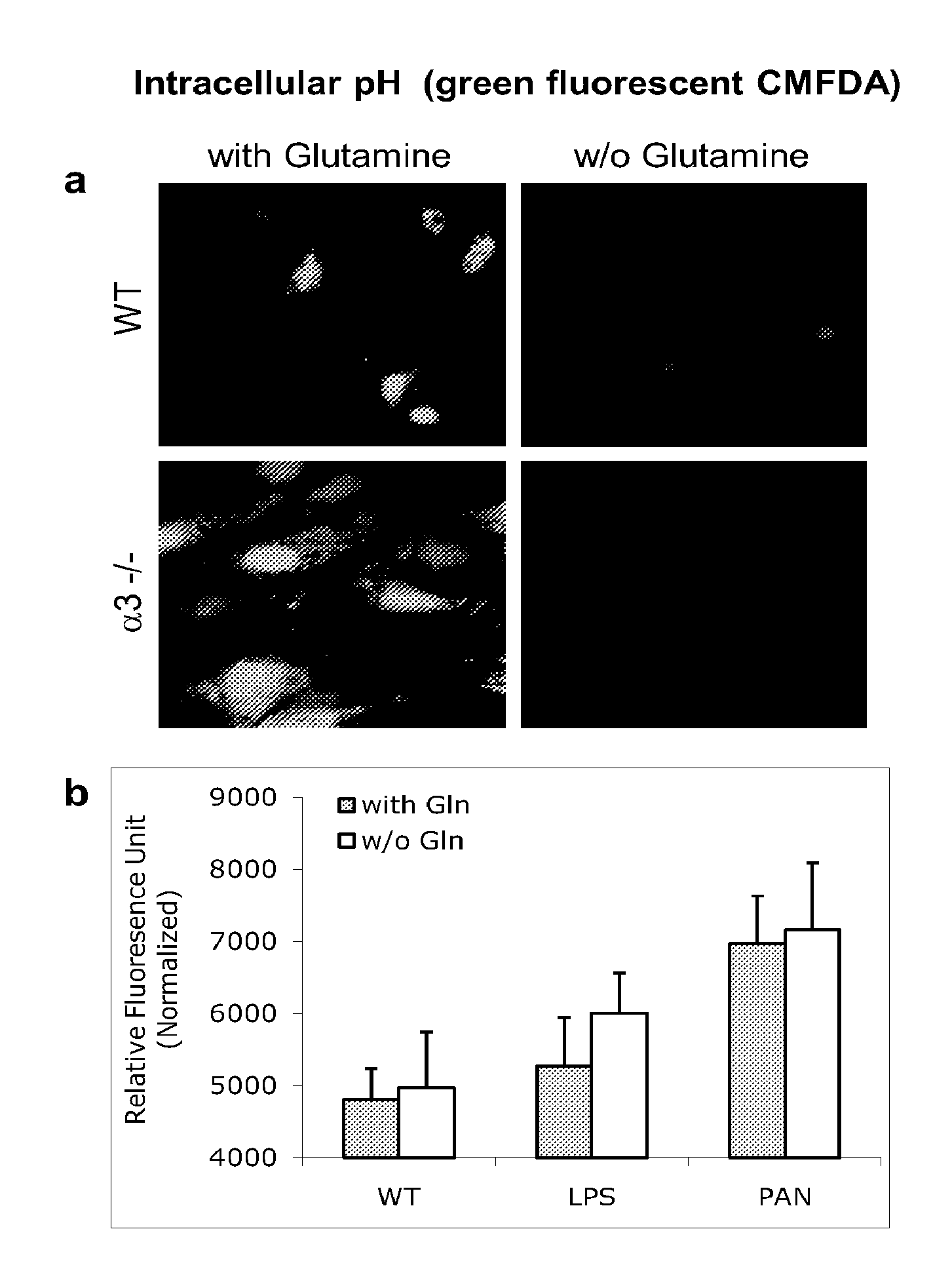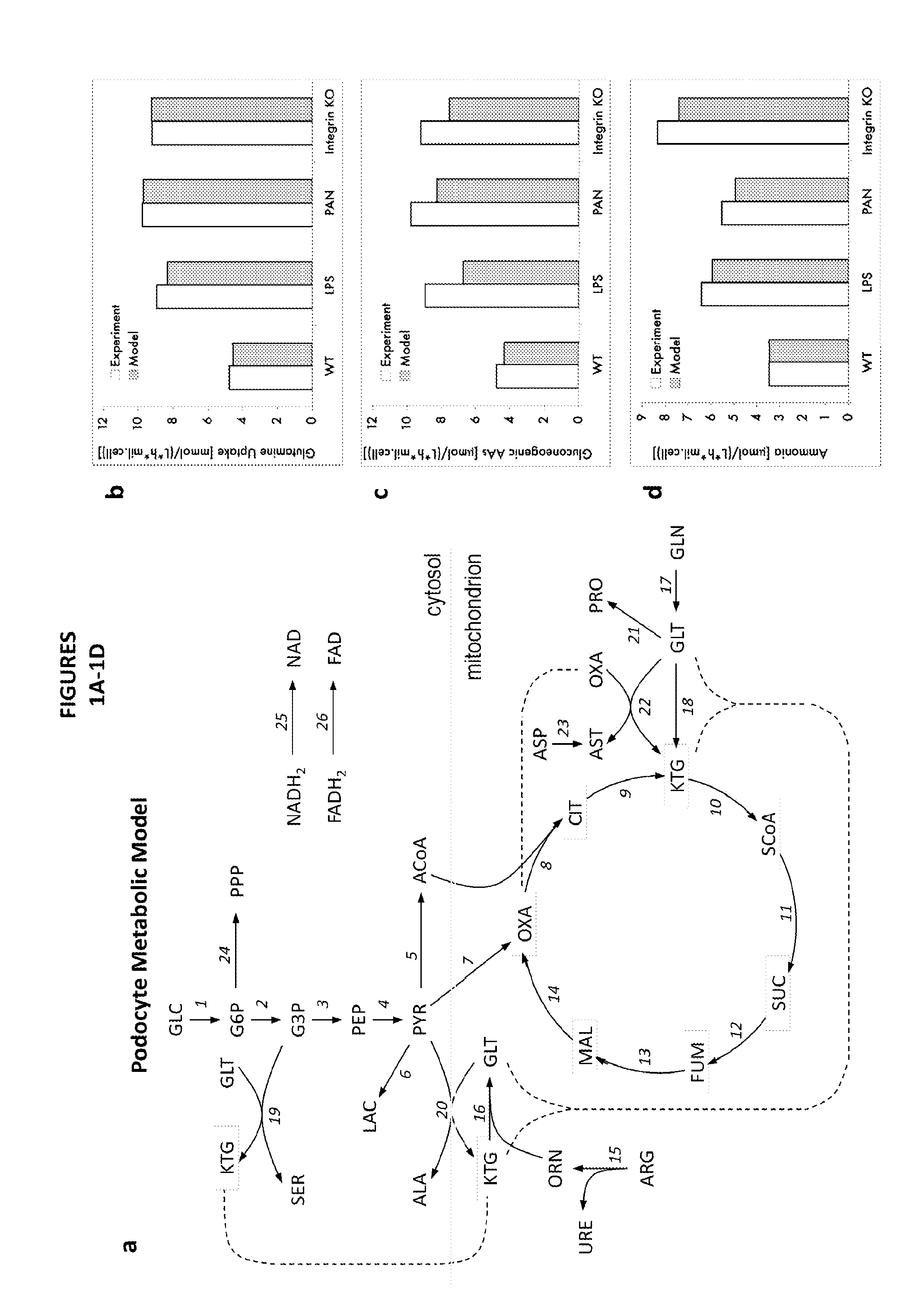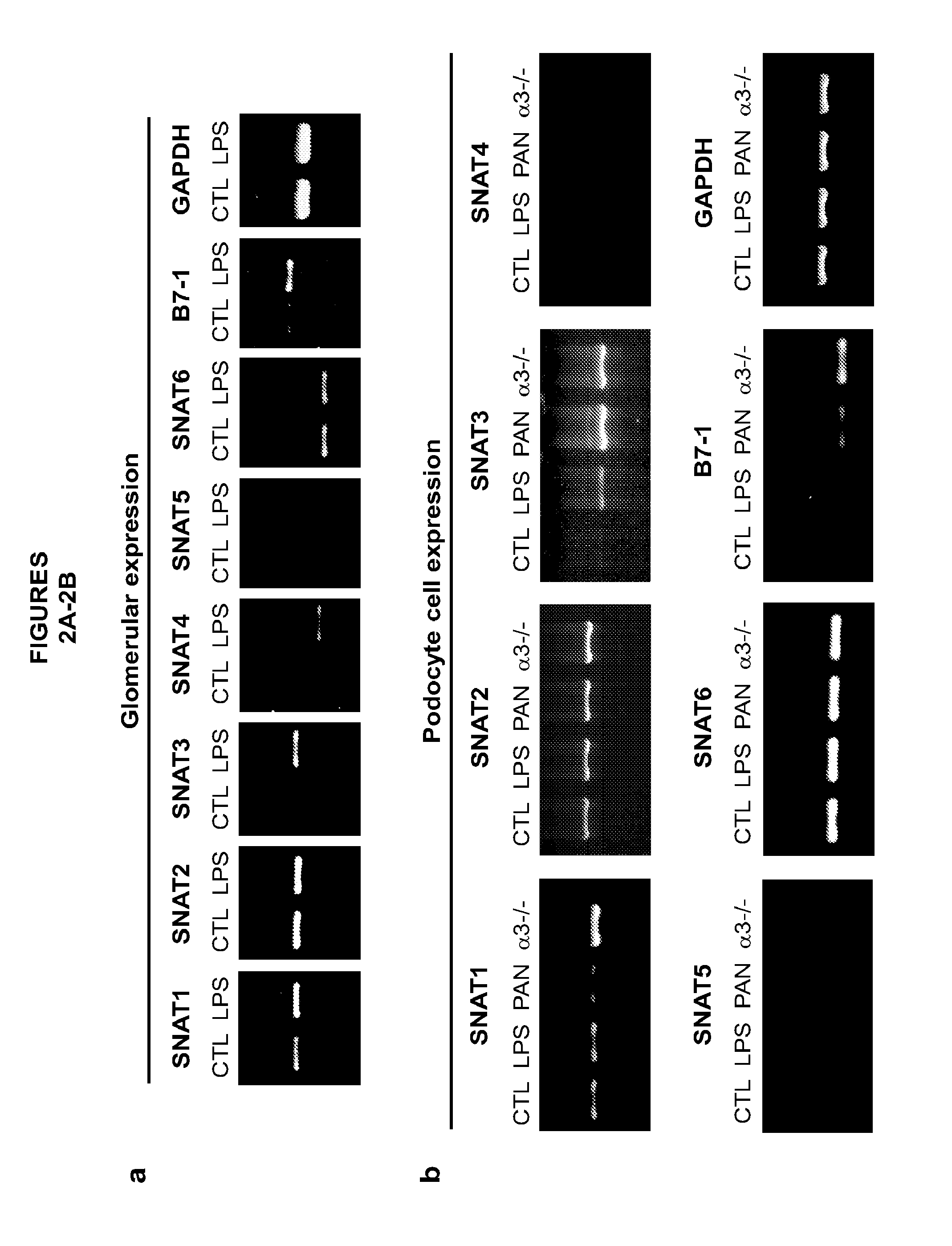Podocyte ph modulation and uses thereof
a technology of ph modulation and podocytes, applied in the field of podocyte ph modulation, can solve the problems of no treatment available, risk factor for cardiovascular morbidity and mortality, and progression of kidney organ loss, and achieve the effect of protecting podocyte function and minimizing proteinuria
- Summary
- Abstract
- Description
- Claims
- Application Information
AI Technical Summary
Benefits of technology
Problems solved by technology
Method used
Image
Examples
example 1
Podocyte pH Modulation
[0165]Methods:
[0166]Podocyte Metabolic Model:
[0167]A podocyte metabolic model was constructed based on available databases as well as mRNA and protein expression data extracted from podocytes. The following podocyte culture models were employed: wildtype (control), LPS and PAN stimulated podocytes (inducible injury models) as well as podocytes with genetic deletion of the alpha3 gene (genetic disease model). All injury cultures increase the uptake of glutamine as well as gluconeogenic aminoacids. In addition, there is increasing ammonia production in diseased podocytes. These changes were predicted by the podocyte metabolic model and confirmed by measuring directly amino acids and ammonia (FIGS. 1A-1D).
[0168]Cathepsin L Activity Assay.
[0169]Subcellular sites of cathepsin L and cathepsin B activity in glomerular extracts were visualized by a fluorogenic substrate, CV-(FR)2, which emits light upon cleavage by cathepsin L or cathepsin B (Biomol). Cathepsin L inhib...
example 2
Reduction of Proteinuria Through Podocyte Alkalinization
[0180]Podocytes are highly differentiated cells and critical elements for the filtration barrier of the kidney. Loss of their foot process architecture results in urinary protein loss, a hallmark of kidney disease. Here we show a novel role for the neutral aminoacid glutamine in structural and functional regulation of the kidney filtration barrier. Metabolic flux analysis of cultured podocytes using genetic, toxic and immunologic injury models identified increased glutamine utilization pathways. We show that glutamine uptake is increased in diseased podocytes to couple nutrient support to increased demand during the disease state. This feature can be utilized to transport increased amounts of glutamine into damaged podocytes. The consequences are alkalinization of the podocyte cytosol and reduction of cytosolic cathepsin L protease activity that all together results in a stable podocyte cytoskeleton and when applied in vivo in ...
PUM
| Property | Measurement | Unit |
|---|---|---|
| pH | aaaaa | aaaaa |
| pH | aaaaa | aaaaa |
| pH | aaaaa | aaaaa |
Abstract
Description
Claims
Application Information
 Login to View More
Login to View More - R&D
- Intellectual Property
- Life Sciences
- Materials
- Tech Scout
- Unparalleled Data Quality
- Higher Quality Content
- 60% Fewer Hallucinations
Browse by: Latest US Patents, China's latest patents, Technical Efficacy Thesaurus, Application Domain, Technology Topic, Popular Technical Reports.
© 2025 PatSnap. All rights reserved.Legal|Privacy policy|Modern Slavery Act Transparency Statement|Sitemap|About US| Contact US: help@patsnap.com



